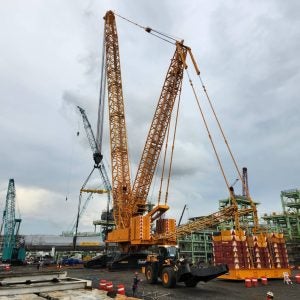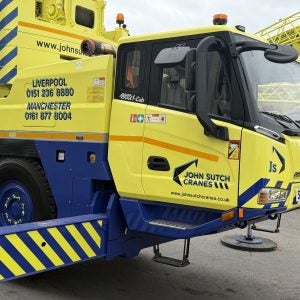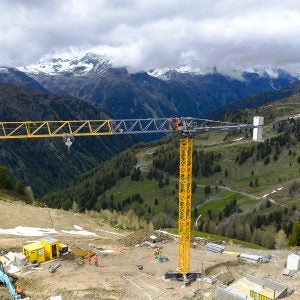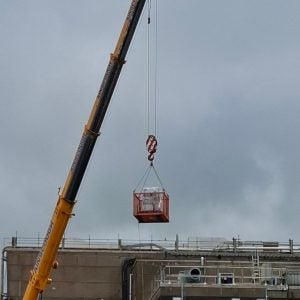In August 2005, the HSE announced that it would not be able to say for sure what caused the collapse, and so did not have enough evidence to bring legal charges against any of the parties involved. The main contractor, Canary Wharf Contractors, subcontracted steelworks to Kvaerner Cleveland Bridge. The cranes were provided by Hewden Tower Cranes.
But construction division technology specialist inspector Ian Simpson revealed a catalogue of errors on the site during the Wilmington Media Crane Safety conference in London on 22 June. His speech follows the publication of a 90-page report on the incident published in June 2005.
On Sunday 21 May, TC3, a Wolff 320BF tower crane with 50m luffing jib working on the site of the 44-storey Hong Kong & Shanghai Bank, was in the process of being climbed when the mast head overturned backwards and fell 120m (400 ft) to the ground below. Six men were working on the site: four on the climbing frame, with two on the lower part and two on the upper part, a driver and a worker on the ground. As the mast-head fell, the two men on the lower portion of the tower crane ran to the ladder inside the mast and survived; the two other men on the frame and the driver died in the incident.
Simpson said that the HSE found that Hewden had no records of thorough examinations or of maintenance of the lifting frame. It had no system for reporting defects that had been found, and to make sure that those defects were fixed. There were no records that the climbing section’s hydraulic power pack had ever been properly overhauled.
An investigation from specialist consultants found that although the Wolff climbing frame did hold up to its rated loads, it had poor resistance to torsional forces, which could be generated if, for example, the tower crane jib-head were slewed during the climbing operation. These torsional forces could push the frame off the mast.
Although normally slewing would be disabled during the climbing operation, the climbing frame power connection was not plugged into the proper socket designed by the manufacturer, but instead hot-wired into the crane controls. That meant that the crane jib could be operated, Simpson said.
In addition, the HTC crane was attached to the building not with the manufacturer’s adjustable ties, but using ties that were welded in place. That meant that once the crane mast was tied, it was impossible to adjust it to make it vertical. Following the accident,
an HSE investigation of the other Hewden tower cranes on site, which also had welded ties, found that they were all at the limits of the manufacturers’ recommendations for verticality.
The company did not have an appropriate method of checking the weather forecast to make sure that the wind would be too strong, Simpson said. “Basically they were listening to the radio on the way to work,” he said. TC3 was not fitted with a wind gauge, although other cranes on the site were.
The erectors were not familiar with working with each other, and were brought together for just that day’s work. They were commuting 400 miles a day, travelling from Castleford (near Leeds) to London and back. Although the company had done a risk assessment, the erectors were not briefed with it.
The company’s method statement for the erection process said, basically, refer to the manual, Simpson said. But he added that there was no manual for the specific crane on site. The erectors had a manual, but for a different model of crane. In addition, Simpson said that Wolff could not provide the HSE with the exact manual for the model.
Simpson added that in the six years since the accident, the HSE has issued a discussion paper on climbing tower cranes, supported a guide on tower crane stability issued by construction research body CIRIA, and helped develop an extra section in the new tower crane use standard BS 7121-5. The Construction Plant-hire Association has set up a Tower Crane Interest Group, and helped organise new training programmes for tower crane erectors. Simpson added that the new HTC, Harrington Tower Cranes, which took over Hewden’s business, now uses better weather forecasts, adjustable building ties, better weather forecasts, better training regimes, and develops full risk assessments and method statements. “Industry has done a lot,” he said.
Related Files
The HSE’s report






